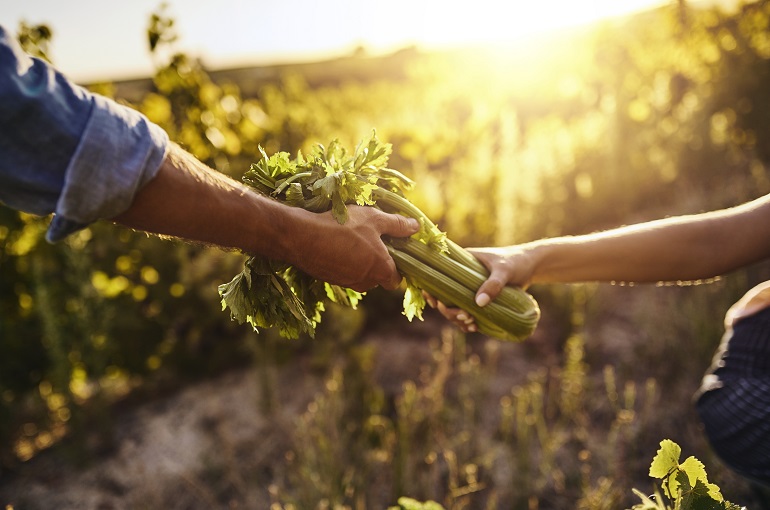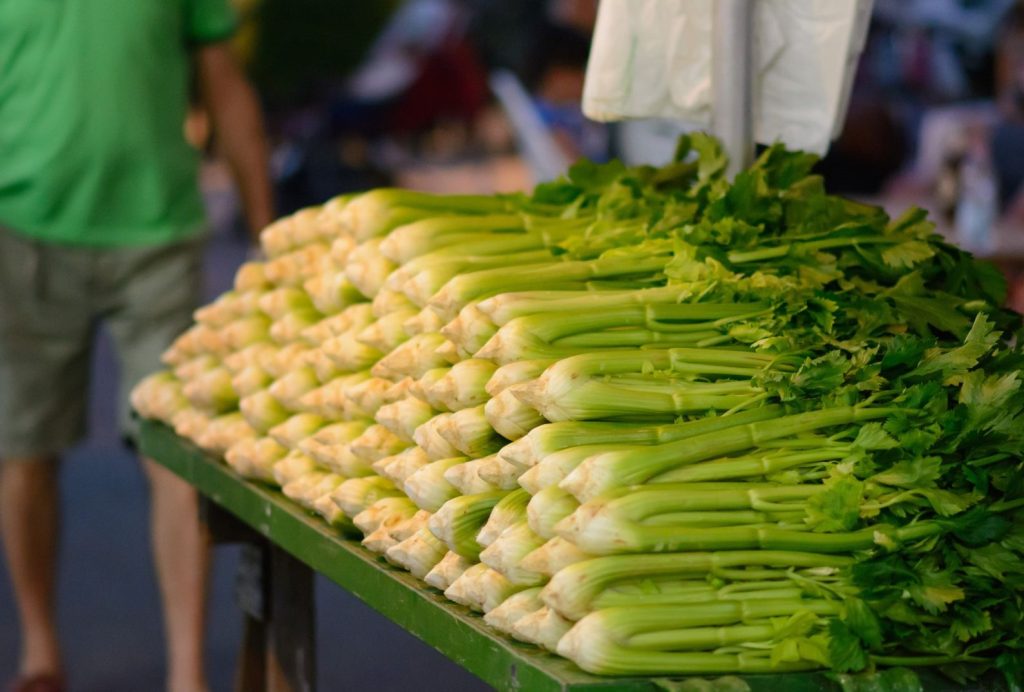Celery Harvest and Yields per Hectare

This post is also available in:
This post is also available in:
![]() Deutsch (German)
Deutsch (German) ![]() हिन्दी (Hindi)
हिन्दी (Hindi) ![]() Ελληνικά (Greek)
Ελληνικά (Greek)
Note: the following information is for Apium graveolens var. graveolens (Celery).
Celery is cultivated for its leaves, stalks, and/or roots, depending on the variety. In general, the plants grown for stalks (celery) are ready to be harvested 3-4 months after planting, by the time they have reached the preferable marketable size (around 18 inches long and 3 inches in diameter or 46 cm long and 7.6 cm in diameter), but before they become hard and fibrous. Harvesting is mainly done manually (with rubber gloves) early in the morning or by mechanical harvesters. To collect the stalks, growers cut the entire plant close to the ground surface. Generally, a compact plant with a stalk weight over 1 kg (optimum 1.5-2 kg) is preferred. An average-good yield for fresh market celery crops is around 20-35 tonnes per hectare (8-14 t/acre).
The stalks are then collected on large trucks and transferred to special rooms where they are cleaned/washed, and packaged. Celery leaves and stalks are sensitive and must be transferred from the field (heat) as soon as possible and cooled (pre-cooling and hydro-cooling). If pre-cooled properly, celery can be preserved for 2-3 months at 0.5-1ºC (33-34 ºF ) and with relative humidity between 90-100%. Since it can absorb odors from other commodities (fruits, vegetables, etc.), it is best to store celery alone. Cartoons, well-ventilated plastic, and anti-fogging, micro-perforated shrink wrap are usually used.
References
- https://agritech.tnau.ac.in/horticulture/horti_vegetables_celery.html
- https://anrcatalog.ucanr.edu/pdf/7220.pdf
- https://coststudyfiles.ucdavis.edu/
- http://nhb.gov.in/model-project-reports/Horticulture%20Crops/Celery/Celery1.htm
- https://horticulture.oregonstate.edu/oregon-vegetables/celery-2
- https://www.sciencedirect.com/science/article/abs/pii/S0260877408002847?via%3Dihub
Further reading
Interesting Facts, Nutritional Value and Plant Information of Celery
How to Grow Celery in a Pot in your garden
Growing Celery for Profit – Commercial Celery Farming
Celery Soil preparation, Soil requirements, and Seeding requirements
Celery Water Requirements – How to irrigate Celery
Celery Fertilizer Requirements
Celery Stalk Blanching – How to Blanch your Celery
Celery Harvest and Yields per Hectare









































































